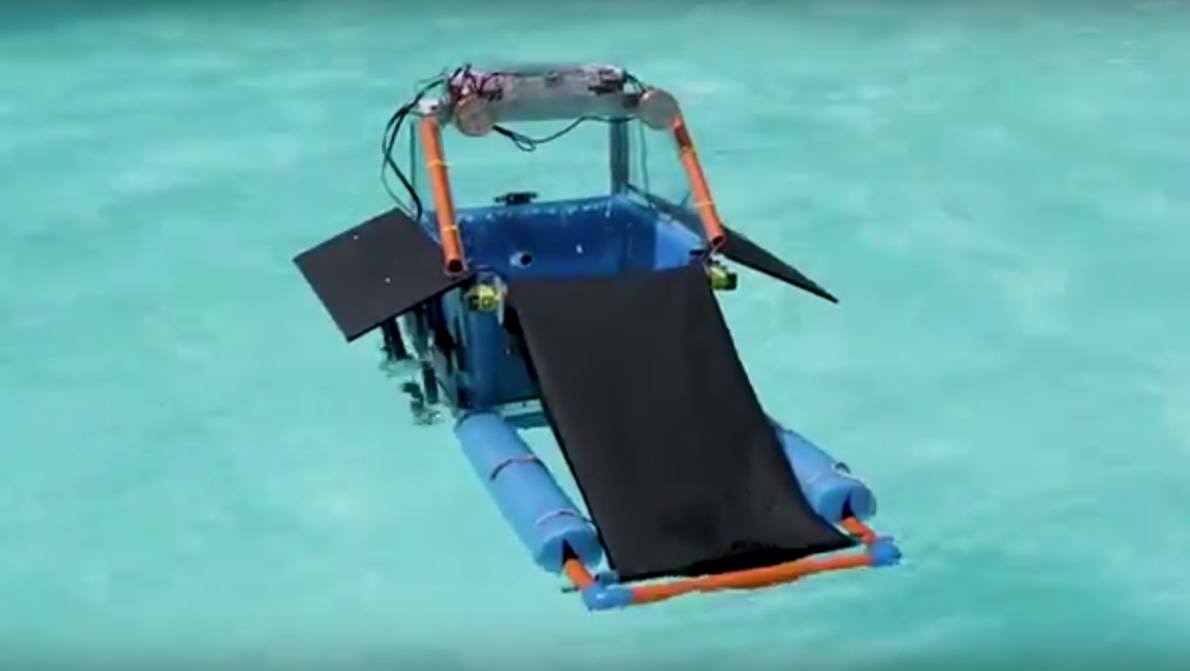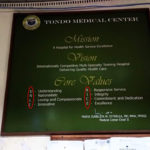The 2018 National Robotics Competition (NRC) held at the Tagaytay International Convention Center showcased the ingenuity of robotics athletes from the grade school and high school. These students built their own robots and took part in twelve different games that had them solving puzzles, collaborating with teammates, and creating robotic inventions.
The 2018 NRC, which coincided with the National Science and Technology Fair, drew in 600 teams from 100 schools coming from twelve regions across the Philippines.
One of the highlights was the Innovative Robot category wherein participants were asked to build a robot that would protect and explore Benham Rise, the resource-rich undersea region that is a subject of a territorial dispute between the Philippines and China.
Benham Rise made it to the headlines lately when Chinese vessels were allowed to explore Benham Rise. A few weeks later, Malacañang spokesperson Harry Roque proclaimed that the government is against the decision of the International Hydrographic Organization’s to give Chinese names to Benham Rise’s undersea features.
According to NCR organizer Melvin Matulac, having a “controversial” theme for the Innovative Robot category was purely coincidental. “We chose the topic months before,” he clarifies.
Just as important were the robots that were made in spite of limited supervision, time and resources. The inventions were diverse and imaginative.
“I am impressed with the quality of work and imagination of the children” say Dr. Hilde and June Nacorda, UPLB/SESAM. “Some of these projects are worth exploring” says Dr. Clint Hassan, Director ICTS, Department of Agriculture. Both were among the judges who assessed the 26 Innovative Robot entries.
Research robots
High schoolers Justin Reign Aguinaldo and Trishaley Castillo of the Philippine Yuh Chiau School in Cabatuan, Isabela, created what they called the Aqua-Bot, a robot that resembles a raft, It had water bottles as floaters and on top were solar panel, a motor and data-collection devices. “It is capable of reading the water’s current pH level and its turbidity,” the girls explain. “It has also the ability to conduct and capture high-quality videos.”
The Sea Exploration and Data Monitoring Robot (acronym: SEDMO) by Jose Carlos Paco and Jazel Paco of Letran Calamba, also has a monitoring capability and elements for exploration and data transfer.
Mounted on PVC pipes were sensors for measuring water pH level and temperature, a mesh wire for collecting marine samples, and a small camera. The SEDMO can also function even in low light.
Ocean cleaners
Pollution in the water was also a concern for some of the participants.
As such, some students built robots that had extensions for cleaning debris. The robot created by Matthew Ryan Chong and Laure Alicia Ortega of MGC New Life Academy in Taguig had a thick absorbent material. In a video, Matthew Ryan, a Grade 4 student, and Laure Alicia, a Grade 5 student, demonstrated how their invention was able to “sweep” cooking oil that was spilled in water.
AquaFex, made by students of Tagaytay City Science (TagSci) National High School, was a “handy little robot that makes our ocean clean.” This robot had a pump that filters dirty water.
Sea patrollers
The Philippine government might be pleased to know that many of the robots were designed to primarily survey Benham Rise.
Such as CNAIA (the Coordinated Nautical Admonisher with Integrated Aeronautical Plotting System) made by Marvin Rosaroso and Maribeth Reyes of the Manila Cathedral School. The name is taken from Siyana, the goddess of the ocean in Philippine mythology. The robot had eight sensors, a transceiver, plus above-the-surface and underwater cameras.
The floating robot shock-wave sensors to detect blasts and proximity sensors to spot vessels from a distance. “If ever, this would become the defender of Benham Rise in the future,” says Maribeth.
The Explo Territorial Guard Bot by DepEd Danao’s Philline Isabel Pasaol and Kathleen Mae Lao is another buoy or floating robot. Housed in a globe-shaped styropor, it let out a series of beeps whenever it detected oncoming watercraft and transmitted sound to. a hand-held radio. The creators emphasize, “The robot will not just help authorities but also the people who are concerned about the beauty and richness of Benham Rise.”
Carlo Charles and Christian Michael Moneda of De La Salle University Integrated School in Biñan fielded their Aqualoop, a buoy robot with an octagonal shape.
The Aqualoop has four precise sensors, filter and a five-way power input. It was built in such a way that other features can be added on. Carlo offers, “A researcher can conduct experiments any time instead of going every back and forth to the scene.”
Singapore-based Conrad judge Sng Lye Huat of Genexis, a company involved in fiber-to-home equipment was very impressed with the works. “I think they’re very innovative. Some went beyond my expectations. The creativity they put into the design is amazing. I believe that some of the designs can be able to commercially launch.”
Service-oriented
For the students, the National Robotics Competition was not just a way to demonstrate knowledge and skill. It became an opportunity to make a difference. Carlo and Christian of De La Salle Integrated School, in particular, have offered their Aqualoop to the Batangas government. “We want to give it to the fishermen for public trial,” says Carlo.
In the end, these kids were strongly motivated by the desire to serve. As Carlo declares, “We want our robots to be of help to people.”

One of the entries of the Letran Calamba Robotics Academy to the 2018 National Robotics Competition Creative competition

SEDMO: Sea Exploration & Data Monitoring Robot (An autonomous robot for Benham Rise exploration and protection)

Tagaytay City Science High School “Aquatic Solid Waste Collector and Exploring Robot”
* Winners of the National Robotics Competition Innovative Robot category Junior, Senior and Open divisions will compete in the World Robotics Games to be held in the Philippines in October 2018. For more information and videos, check out pinoyrobotgames.org and Pinoy Robot Games on Facebook.
POPADVT



